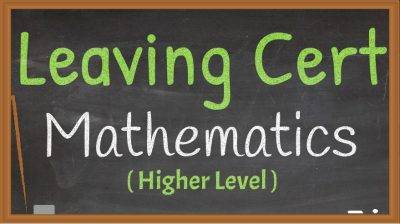Leaving Cert Maths (H) Grinds

About Course
Subject: Leaving Cert Mathematics (Higher)

Exams Start in:
GOAL:
Give students a better understanding of their subject, build confidence and help them achieve higher exam grades.
INTRODUCTION:
Tuition Farm’s classes are presented by highly qualified and experienced grinds teachers, who are experts in their subject.
Each lesson focuses on a specific topic, including an in depth analysis of past exam papers, where the teacher shows students how best to answer these questions to achieve top marks.
The final two lessons of our 24 week course focuses on exam techniques and further analysis of exam questions and answers.
This course was originally €399, and we are now releasing the recordings for the low price of only €59.
What do you get when you purchase this course?
For €59, you get instant access to ALL the lessons listed below.
COURSE CONTENT:
Week 1 – Algebra (Part 1)
Week 2 – Algebra (Part 2)
Week 3 – Algebra (Part 3)
Week 4 – Sequences and Series (Part 1)
Week 5 – Sequences & Series (Part 2) & Financial Maths (Part 1)
Week 6 – Financial Maths (Part 2)
Week 7 – Complex Numbers (Part 1)
Week 8 – Complex Numbers (Part 2)
Week 9 – Trigonometry (Part 1)
Week 10 – Trigonometry (Part 2)
Week 11 – Trigonometry (Part 3)
Week 12 – The Line & the Circle (Part 1)
Week 13 – The Line & the Circle (Part 2)
Week 14 – Arrangements & Combinations in Probability
Week 15 – Rules of Probability
Week 16 – Statistics
Week 17 – Inferential Statistics (Part 1)
Week 18 – Inferential Statistics (Part 2)
Week 19 – Calculus (Part 1)
Week 20 – Calculus (Part 2)
Week 21 – Calculus & Integration
Week 22 – Revision (Part 1)
Week 23 – Revision (Part 2)
Week 24 – Revision (Part 3)
FREE SAMPLE LESSON:
CLASS NOTES:
*IMPORTANT INFORMATION*
Theses lessons are recordings from our live grinds courses, so there may be interactions and questions between our teacher and the students.
Please note, some classes may not be required for the upcoming exams. However, we have included them as a source of knowledge for students.
